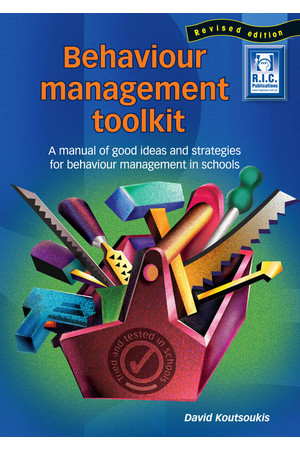How to avoid teacher burnout

While the vast majority of the population understands the stellar work that teachers perform on a daily basis, there are still those who scoff and say that teachers have it pretty easy. They will point at school hours, free weekends, and summer holidays as sign that this is a pretty cushy career. Those people that think that actually know very little about what the job entails and the toll it can take on the people who do it. It is a demanding job that requires a number of positive personality traits in order to be done well, with many of those traits put to the test in the classroom every day.
As such, it is not uncommon for teachers to end up becoming disillusioned, exhausted, and completely burned out. It seems that budget cuts get deeper every year, affecting the tools and help that teachers need and expect in order for their classrooms to run smoothly. Furthermore, those cuts often mean school closures, leading to more kids being shuffled off to other schools, making classroom sizes larger in the process. All of this places a heavier burden on the teacher, which in turn can takes stress and frustration levels to all new heights.
Spotting the signs of potential burnout
It can often be difficult to know that you are about to completely burnout before you hit bottom. Yes, you may feel a little disillusioned with the current state of your job, but that is something that everyone feels at some time or another in their career. Many times, teacher burnout is not caused by the teacher hating their job, but rather the conditions that they are asked to work in. Here are just a few of the things that may lead to frustration and eventual burnout:
- Autonomy issues – Any good teacher will tell you that they like to be in complete control of their classroom. Yes, there is a curriculum to follow, but how they present it is what makes them unique. Problems can start to arise when outside interference from the parents, board members, or school administrators makes teaching difficult. Most of the people who feel they need to have their two cents put in are those that know little about teaching or the running of a classroom.
- Student behaviour – There is nothing more frustrating to a teacher than trying to educate a room full of children who are simply unwilling to listen. While it seldom happens that the whole classroom is disruptive, it only takes one or two to make the teaching year very long indeed.
- Support issues – This often goes hand in hand with the student behaviour problem, as there is often little support offered from those in a position to help. The finger of blame is often aimed in the direction of the teacher, who many feel should be able to handle any and all situations that arise in the classroom. The fact is that teaching can be a very solitary profession, and one that leads to the teacher feeling as though there is no help to be had when it is needed most.
Taking steps to avoid teacher burnout
In most careers, people can leave their job and go work for a new company where conditions are much better. There is also the option to get off at 5pm, go home and leave the stress behind. In teaching, the issues mentioned above tend to be there wherever you go, albeit in varying degrees. The job also goes on long after the kids have gone home, with papers to grade and lesson plans to put together for the days and weeks ahead. The vast majority of teachers understand this, and those who are able to avoid burnout are the ones who can find creative ways around those issues, as well as ways to keep themselves from becoming bored or disillusioned. Let’s take a look at ways that teachers can take control of the classroom and get the help they need:
- Lesson plans – As previously mentioned, teachers have work to do once the kids go home, with much of that work being done at home when they should be having downtime. Lesson plans are particularly time consuming, but a lot of that time can be saved by using blackline masters photocopiable lesson plans, all of which have been put together by experienced educators. The lesson plans will follow the curriculum to the letter and save you a ton of time and effort after class.
- Classroom help – Much of the stress that comes in the classroom can be taken away with a little bit of help. There are a couple of options here. You can ask parents to come in and volunteer their time to help, or you can assign jobs to the students. The latter is a great way to relieve the work burden in the classroom, while making the kids feel as though they are an important part of the running of the room. This will often help cut out unruly behaviour.
- Save time – One way to spice things up in the classroom is to decorate it with educational charts and posters that the kids can go and look at when you are trying to teach a specific point. Save time making these resources by encouraging students to create these as part of a lesson, or use pre-made educational charts and posters that are fun and educational.
These are just a few ways to bring back the fun and excitement to the career that you love. If you feel that you are getting to the point in your career where the fun has been replaced by frustration and tiredness, you need to take steps to avoid burnout. Take the time to talk to other teachers about your problem, and source great pre-made educational resources that will help steer you clear of teacher burnout.
Related Products
Leave a comment
Recent Blog Posts
- Boosting Your Child's Reading Skills: Easy Intervention Strategies
- Cultivate Growth Mindset: Nurturing the Power of Effort and Perseverance
- Gamify Learning: Ignite Engagement and Motivation with Interactive Games
- Top 10 Tips for Exploring Science at Home
- Enhance Your Child's Maths Skills with Teacher Superstore's Maths Resources: A Guide for Parents
- Integrate Technology: Transforming Classrooms with Digital Tools
- Homework Help 101: Effective Tips for Parents
- Use Formative Assessments: Guiding the Student Learning Journey Through Timely Feedback
- Creating a Positive Learning Environment at Home: Tips for Parents
- Embrace Project-Based Learning: Unleashing Student Potential in a Real-World Context
View All Posts
General
Help Topics
- Browsing and Buying
- Member Benefits
- Shipping and Delivery
- International Shipping
- Payment and Billing
- Returns Policy
Legal
View All Posts





